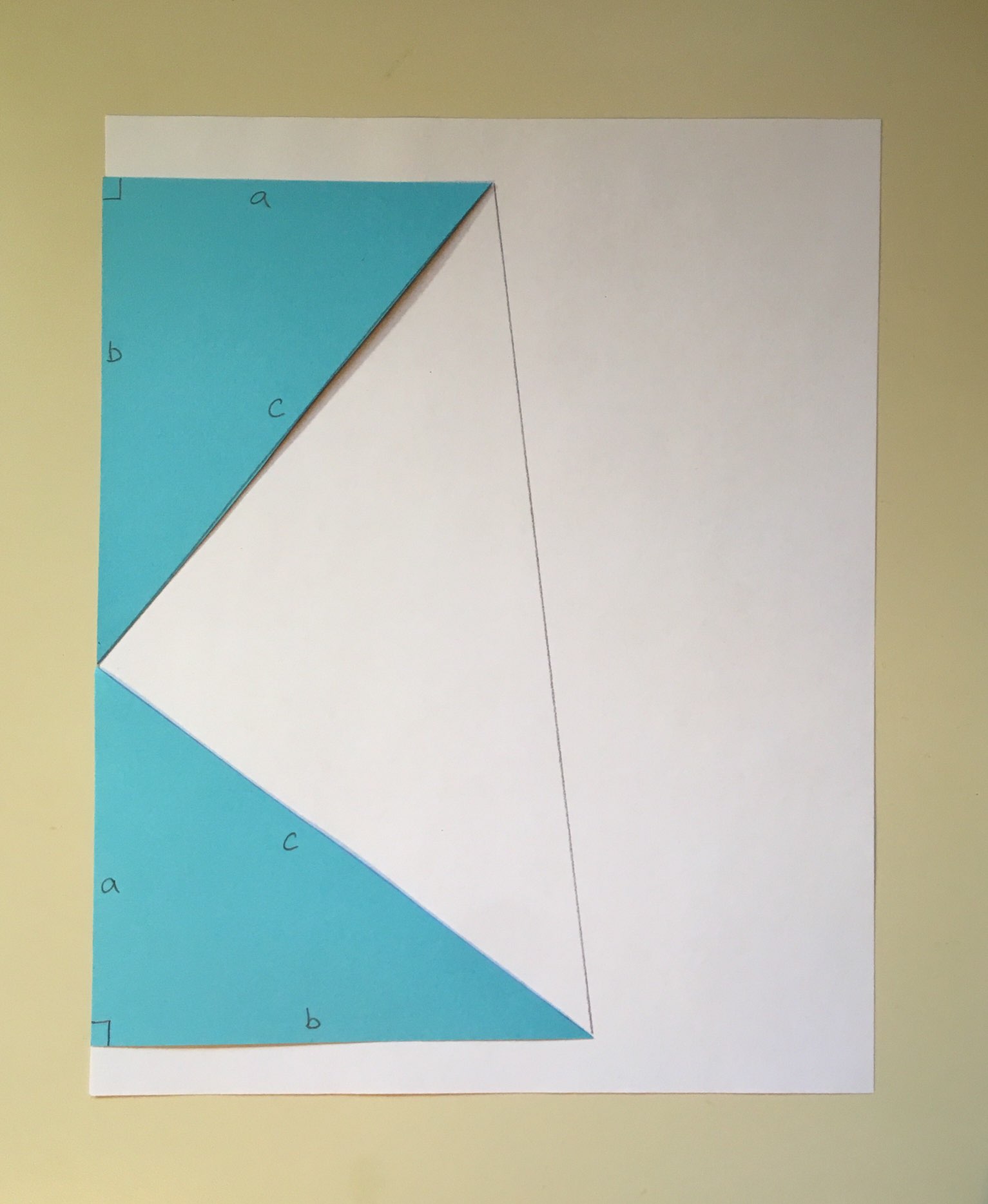Lesson 14
Proving the Pythagorean Theorem
- Let’s prove the Pythagorean Theorem.
14.1: Notice and Wonder: Variable Version

What do you notice? What do you wonder?
14.2: Prove Pythagoras Right

- How did Elena get from \(\frac{a}{x} = \frac{c}{a} \text{ to } a^2=xc\)?
- What equivalent ratios of side lengths did Diego use to get \(b^2=yc\)?
- Prove \(a^2+b^2=c^2\) in a right triangle with legs length \(a\) and \(b\) and hypotenuse length \(c\).
14.3: An Alternate Approach

When Pythagoras proved his theorem he used the 2 images shown here. Can you figure out how he used these diagrams to prove \(a^2+b^2=c^2\) in a right triangle with hypotenuse length \(c\)?
James Garfield, the 20th president, proved the Pythagorean Theorem in a different way.
- Cut out 2 congruent right triangles
- Label the long sides \(b\), the short sides \(a\) and the hypotenuses \(c\).
- Align the triangles on a piece of paper, with one long side and one short side in a line. Draw the line connecting the other acute angles.
How does this diagram prove the Pythagorean Theorem?

Summary
In any right triangle with legs \(a\) and \(b\) and hypotenuse \(c\), we know that \(a^2+b^2=c^2\). We call this the Pythagorean Theorem. But why does it work?
We can use an altitude drawn to the hypotenuse of a right triangle to prove the Pythagorean Theorem.

We can use the Angle-Angle Triangle Similarity Theorem to show that all 3 triangles are similar. Because the triangles are similar, corresponding side lengths are in the same proportion.

Because the largest triangle is similar to the smaller triangle, \(\frac{c}{a}=\frac{a}{d}\). Because the largest triangle is similar to the middle triangle, \(\frac{c}{b}=\frac{b}{e}\). We can rewrite these equations as \(a^2=cd\) and \(b^2=ce\).
We can add the 2 equations to get that \(a^2+b^2=cd+ce\) or \(a^2+b^2=c(d+e)\). From the original diagram we can see that \(d+e=c\), so \(a^2+b^2=c(c)\) or \(a^2+b^2=c^2\).
Using the Pythagorean Theorem we can describe a triangle's angles without ever drawing it. For example, a triangle with side lengths 8, 15, and 17 is right because \(17^2=8^2+15^2\). A triangle with side lengths 8, 15, and 18 is obtuse because \(18^2>8^2+15^2\). A triangle with side lengths 8, 15, and 16 is acute because \(16^2<8^2+15^2\).
Glossary Entries
- altitude
An altitude in a triangle is a line segment from a vertex to the opposite side that is perpendicular to that side.
